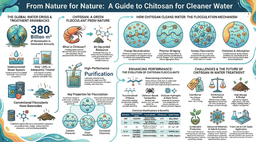Yay! We got some outlier loci! Now what???
Published in Ecology & Evolution and Genetics & Genomics

In evolutionary biology, outlier loci are specific genetic locations where patterns of variation deviate from what is expected under neutral evolution. When a locus shows significantly higher or lower genetic differentiation compared to neutral expectations, it is considered an outlier. Identifying these loci is of particular interest because they can pinpoint regions of the genome under selection, shedding light on the genetic basis of adaptation.
The interest in outlier loci has its roots in the emergence* of multi-locus outlier tests nearly 30 years ago (Beaumont & Nichols 1996). Evolutionary biologists have since been captivated by the potential of these loci to reveal how populations evolve in response to environmental pressures. However, the field of adaptation genomics experienced its real quantum leap with the emergence of Next-Generation Sequencing (NGS) technologies, which revolutionized the ability to obtain high-resolution, genome-wide data for virtually any species of interest. This has enabled researchers to detect signatures of selection by efficiently screening millions of single nucleotide polymorphisms (SNPs). Yet, the progress in dissecting the molecular mechanisms of adaptive variants and traits has been slow. Several challenges have hampered a rapid progress. For example, one of the most common issues faced during outlier screening is the size of genomic regions shaped by selection – selective footprints often harbour tens to hundreds of genes, making it difficult to pinpoint specific targets of selection. Furthermore, most adaptations have a polygenic genetic basis (Barghi et al. 2020), and many recent studies highlight the importance of regulatory variation—rather than coding sequence variation—in shaping organismal phenotypes and driving evolutionary processes (Verta and Jones 2019; Price et al. 2022). However, identifying adaptive regulatory variants that influence gene expression variation is challenging.
In our previous work, we identified hundreds of candidate regions and genes associated with adaptation to humic (dark and acidic water) environment in the common fish species, Eurasian perch (Perca fluviatilis) by carrying out whole genome sequencing of 32 populations (Ozerov et al. 2022). Notably, we found a significant excess of outlier SNPs in regulatory regions of genes, which suggests that variation in gene expression likely plays a crucial role in adaptation. As a next step, we aimed to systematically add functional genomics layers to the existing genome-wide data on selection to refine our understanding of key tissues, physiological processes and genes involved in humic water adaptation. We predicted that the excess of outlier SNPs among differentially expressed genes (DEGs) between humic and clear-water environments in a specific tissue would indicate its involvement in humic adaptation.
To test this prediction and evaluate the usefulness of our integrative framework, we generated transcriptomes of five separate tissues (gill, spleen, olfactory rosette, liver, and eye) of perch collected from 8 humic and 8 clear-water lakes (Ozerov et al. 2025 https://doi.org/10.1111/mec.17698). These tissues encompass a range of functions, including metabolism, sensory perception, immunity, respiration and osmoregulation. By combining transcriptomic information with genome-wide signatures of selection, our specific aims were:
(i) Identify key physiological processes more relevant for adaptation, (ii) prioritize most promising candidate genes under divergent selection, (iii) detect potential regulatory links between SNPs and transcript abundance variation through investigating cis-regulated eQTLs, and (iv) refine candidate regions and genes by examining overlaps among outliers, DEGs and eQTLs.
Following a brief yet intensive fieldwork season (fun part involving kayaking, gillnets, rubber boots and contending with mosquitos), we embarked on meticulous laboratory work. This phase involved both standard and improvised tools, such as hammer for crushing frozen eye-balls. Subsequently, we undertook extensive bioinformatics analyses, re-analyses and re-re-analyses (excitement mixed with bursts of frustration), which led to the discovery of over 5,000 DEGs across the five tissues studied. The gill exhibited the highest number of DEGs (n = 4,311), while the liver showed the fewest (n = 241).
More interestingly, as we predicted, the proportion of outlier SNPs among DEGs varied considerably between tissues. We observed a notable excess of outliers among DEGs in the gill and spleen, indicating these genes’ involvement in adaptation to humic environments. Furthermore, outlier SNPs were highly overrepresented among cis-eQTLs in the spleen and olfactory rosette, suggesting that some of the detected regulatory variants are likely adaptive. Several eQTLs were located in regions showing the strongest signals of selection, which also harboured DEGs (Chr 5 PLAGL2, Chr 7 PPP1R8, TCHH).
To conclude, by integrating genome-wide footprints of selection with transcriptomic data from multiple tissues, we were able to narrow down the initial large list of outlier SNPs by tenfold. This refinement allowed us to prioritize candidate genes under selection based on their expression patterns, and to identify physiological functions that likely play a key role in adaptation. Moreover, we uncovered putative causative links between SNPs and transcript abundance variation, finding that some cis-acting regulatory associations have likely been shaped by divergent selection. While our transcriptome study did not explicitly disentangle plastic and genetic effects on gene expression variation by studying organisms in their native environment, we successfully bridged the gap between genome scans for selection and functional genomics approaches. We anticipate that combining evolutionary and functional genomics perspectives, as demonstrated in this work, offers a practical framework for understanding the genetic basis of phenotypic diversification and adaptation across a wide range of species.
References
*Lewontin & Krakauer (1973) initially proposed a multi-population test of neutrality to identify loci affected by geographically varying selection
Barghi N, Hermisson J, Schlötterer C (2020) Polygenic adaptation: A unifying framework to understand positive selection. Nature Reviews Genetics, 21(12), 769-781.
Beaumont MA & Nichols RA (1996) Evaluating loci for use in the genetic analysis of population structure. Proc. R. Soc. Lond. B. 2631619–1626
Lewontin RC & Krakauer J (1973) Distribution of gene frequency as a test of the theory of the selective neutrality of polymorphisms. Genetics 74, 175-195.
Ozerov M, Noreikiene K, Kahar S, et al. (2022) Whole-genome sequencing illuminates multifaceted targets of selection to humic substances in eurasian perch. Molecular Ecology. 31(8):2367-2383.
Ozerov YM, Noreikiene K, Taube K, Gross R, Vasemägi A (2025) Integrative genomics refines tissues, candidate genes and putative regulatory links involved in the humic adaptation of keystone freshwater fish. Molecular Ecology, , 0:e17698. https://doi.org/10.1111/mec.17698.
Price PD, Palmer Droguett DH, Taylor JA et al. (2022) Detecting signatures of selection on gene expression. Nat. Ecol. Evol. 6, 1035-1045.
Verta J-P & Jones FC (2019) Predominance of cis-regulatory changes in parallel expression divergence of sticklebacks. eLife 8:e43785.


Please sign in or register for FREE
If you are a registered user on Research Communities by Springer Nature, please sign in